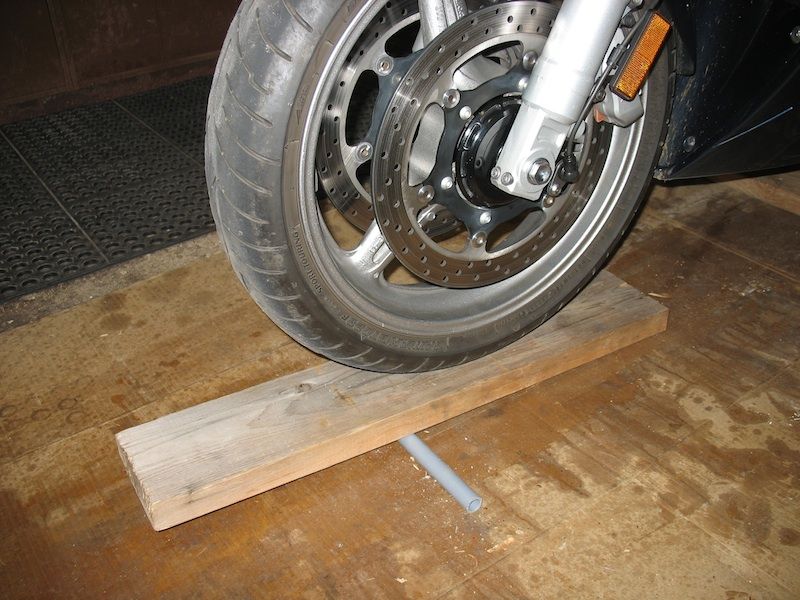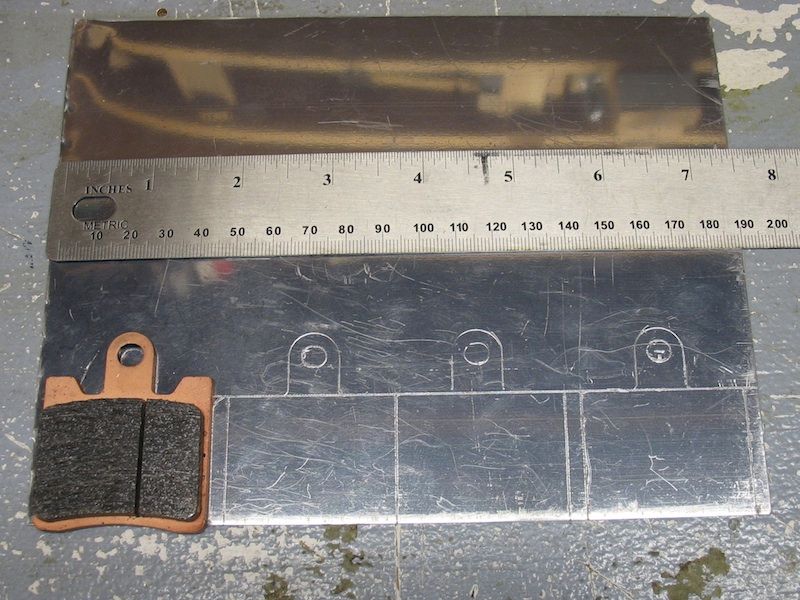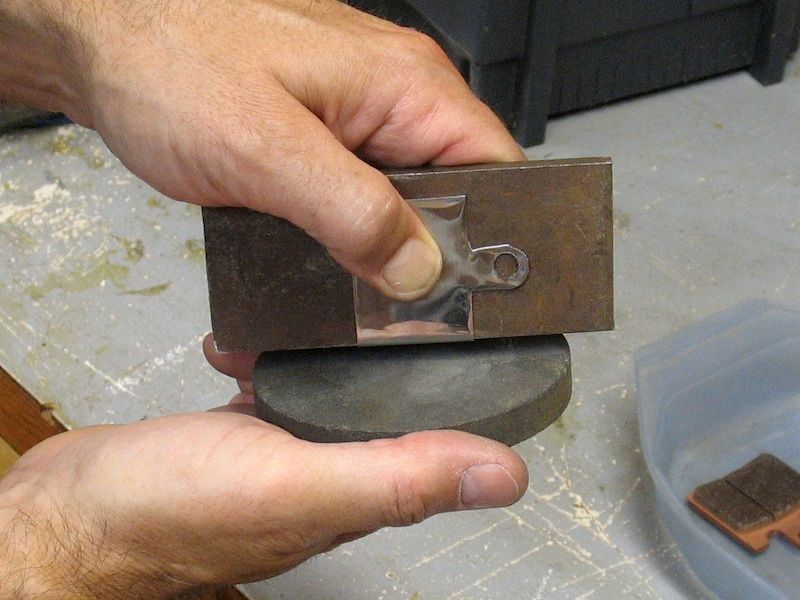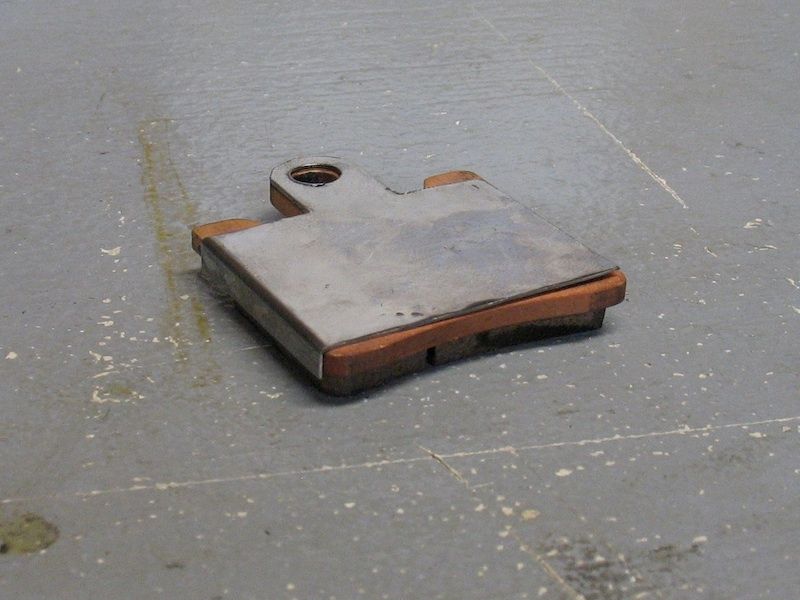About a year ago I finally solved the front end rattle on my '06 FJR. I apologize for the late post - partly due to the time I needed to prove out my solution to make sure it was sound, and in part, due to my utter laziness.
Little history first. I would notice the clunking or rattle sound at slow speeds going over rough road sections - railroad tracks and potholes. The sound drove me (nuts) to create a number of hypotheses that led to a lot of effort to prove or disprove. One thing I know about rattles, whether car or motorcycle, is that they can be very deceiving as sound can travel, resonate unrelated objects, and can sometimes be felt. After performing a thorough nuts and bolts torque check on everything accessible without removing body panels, my investigation proceeded through the usual suspects.
(1)
Steering head bearings: I started here because I swore I could feel the rattle in the handle bars and it sure sounded like steering bearing slop. Even after doing the usual fore-aft yank on the forks while the front end was raised and finding no detectable free play, I was still convinced they were somehow the source of the noise. I've been down this path before with my '88 FZR (that's another story). If there is one thing I've learned, don't blame Yamaha steering head bearings. They're simply excellent. However, as good as the bearings are, they could have been torqued incorrectly. Having a factory manual on hand, I tore mine down, repacked them and re-torqued them to spec. This proved to be a total waste of time - but I had to be sure. Next...
(2)
Loose body parts: Rivets, loose panels, slop in the windshield mechanism, loose battery? Nuts enough about finding this rattle, I began removing the front fairing - windshield, main shroud, and lowers. The process of elimination. Still the sound persisted.
(3)
Internal fork parts: The only reason I even let my imagination wander here is because of the experience I had with tracking down a front-end clunk on my '88 FZR. The FZR indeed has a clunk originating from a slide valve in the bottom of the forks. Some of which I cured by installing a cartridge emulator which necessitates drilling large holes in the damper tube to allow the damping to be controlled by the installed cartridge valve body instead. So I figured this was a possibility with the FJR too. At this point I had to weigh either living with the rattle or going through the downtime and effort of disassembling the forks just to chase down a sound that probably wasn't harmful but just annoying. Besides, even if it turned out to be a slide valve or like, what could I do about it? Possibly install a Race Tech Gold Valve kit again. But the expense, effort, and the fact that I thought forks worked just fine the way they were led me have to get more creative...
Let me pause here and introduce a new tool I had to devise. Since it proved very difficult to run along side my FJR while someone else piloted it over a series of rough sections, so I could place my ear here and there to zero in on the culprit, I needed a way to simulate road bumps in a stationary manner. Enter the teeter totter, or more scientifically, the lever and fulcrum.

As the photo suggests better than my words can describe, I borrowed one of my kids to stomp on one end of the lever (2x6) while I positioned my ear to locate the source.
So armed with my new tool, I was quick to isolate the noise to the front brakes. Suspecting brake pad rattle, I had my helper begin the stomping while I first applied the front brake and then both front and rear to make sure all pads were activated (i.e. linked brake system). Sure enough, the rattle diminished with just the front applied and completely stopped when both were applied.
(4)
Brake pads: At this point I thought it was simple, my brake pad retaining clips must have gotten soft - possibly from all of the heat cycling they were exposed to. Sounded good. So I forked out the crazy $22 per clip (4 in all). But while installing them and comparing them to the old ones with no discernible difference, I realized what the problem was.
These 4-pad Nissin calipers have a bit of a design flaw. Those expensive retainers really don't accomplish what they're meant to. They don't prevent the pads from moving up and down in their respective slots as a two pin system would. All they really do is push them into their slots as far as the retainer pins will allow. But the pads along with their respective retainer clips are still very free to rotate around the axis provided by the single retainer pin. This is not a problem with 2-pad designs that use 2 pins to hold each pad (like my FZR), as the retainer clip will then push the pads against two pins (two axis not one) and prevent them from pivoting.
BTW, I realize that a number of FJR owners have found their brake rotors to be loose on the carriers. I suspected this in my case when performing the simple forward brake and backward brake test in the driveway. Well loose rotors would surely show in this test, but so do pads that have too much slop between them and the caliper housings. In my case, the rotors have no detectable slop.
(This problem made me wonder if there were other bikes out there with similar caliper designs. Sure enough, the C14 uses Nissins that use 4 pads per also. So I googled for C14 owners experiencing mystery rattles and found that they exist. I have to wonder if the Nissin calipers are the cause.)
The Solution: Somehow I needed to remove some, but not all of the slop between the brake pads and the caliper housings to limit the rotation that occurs when hitting bumps. I needed to devise a shim that would fold over the edge to provide some fill for this gap that exists between pad and caliper. Safety first. The shim needed to stay put and not in anyway become dislodged or jam under use. Plus I needed to consider thermal expansion of parts, so I fully intended to leave some play and test the system gradually.
I began by measuring the gaps between the edge of each pad and the caliper housing. Using feeler gauges, I came up with a fairly consistent 0.020" (~0.5mm). I then purchased 0.018" stainless steel sheet metal I found at my local hardware store to create the shims. I'll let the following images do the talking as to how I fabricated them. It is important to note that I built the shims to utilize the retaining pins to hold them securely. Also, I chose 0.018" stock to provide the sturdiness and strength for the shim, but then honed the folded surface (the portion that fills the gap between pad edge and caliper body) down to roughly 0.015" to provide enough gap to prevent binding.
Traced pieces using a pad as a template - don't forget to include the lip that folds over the edge of the pad...

Cut, fold, and hone...

Fit and finish...

 Testing
Testing: Being confident that the shims were not going to move around, get jammed, or fly off, I still was leery of thermal expansion issues. After all, didn't Yamaha or Nissin design that play in there for a reason??? So I tested the pads slowly. First in my driveway, then down the street, and eventually by just dragging the brakes to generate as much heat as I could. I also figured even if the pads did seize in the caliper, that at most they wouldn't retract and would get hot, but never be able to lock up the wheel. Well it's been over 10k rattle free miles without incident. (I'm still here to write about it).
Final comment: I believe the 0.020" gap that exists between the pad and caliper body has probably grown since the bike was new. For one, the rattle didn't exist initially and eventually developed and progressed. This was all on the original pads, so I figure either the pad edges, or caliper-pad contact surface, or both compressed from usage causing the gap to widen. If you are going to try this at home, make sure you make your gap measurements and hone down the shim edge accordingly.
Hope this helps somebody out there. It sure made me love my FJR even more. There is nothing more annoying than listening to a bike rattle and roll down a slow city street, and wondering if everyone else hears all that racket too.
Enjoy.








